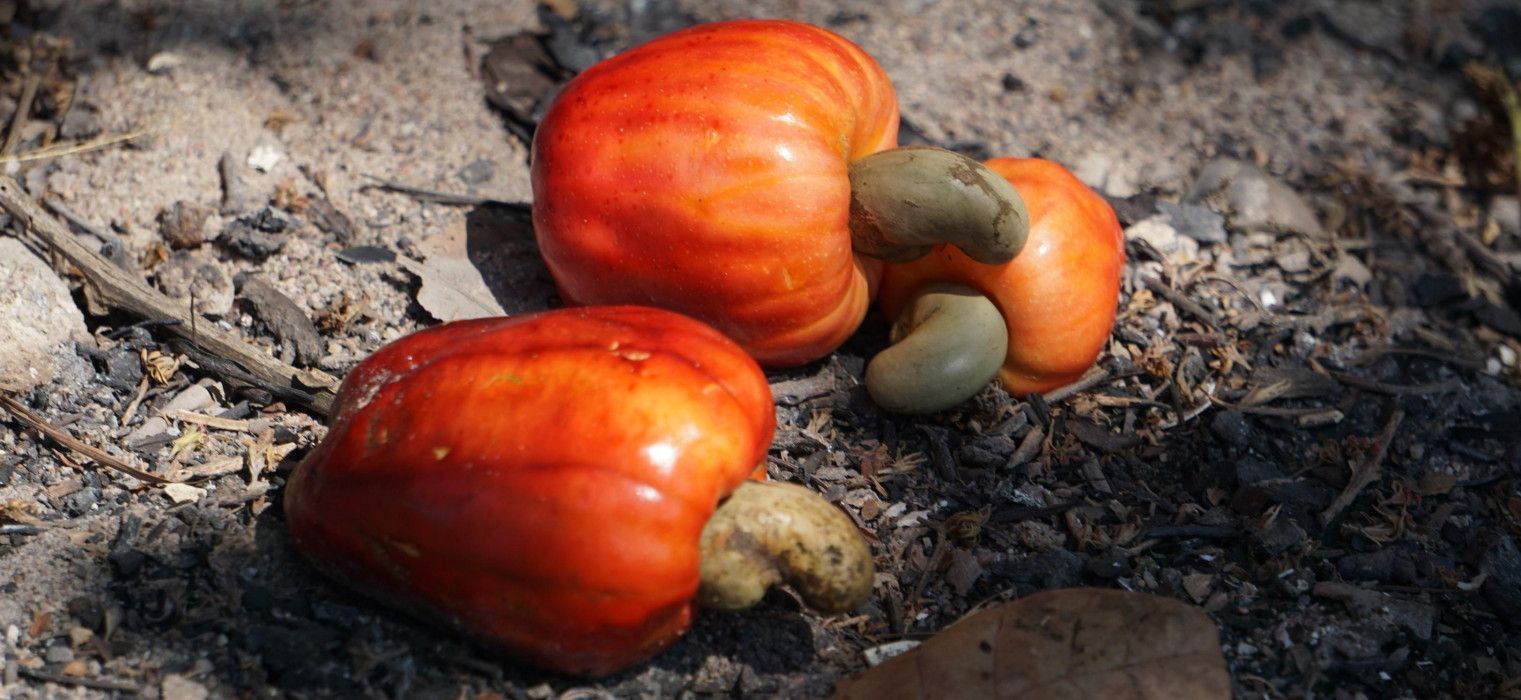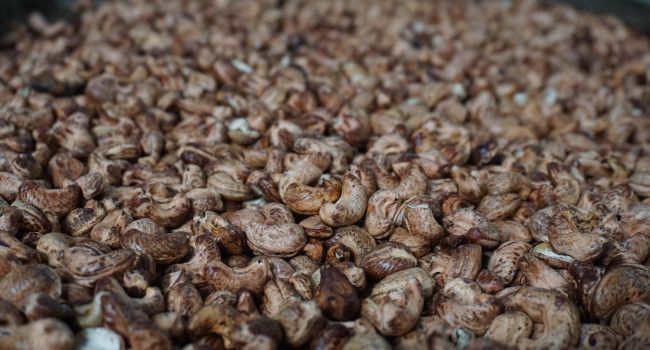The cashew story

In a salad, ground into pasta or simply as a snack: cashews are versatile, healthy and above all very tasty. But where exactly do they come from?
These nuts originally come from Brazil, but then Portuguese explorers introduced them to numerous other places several centuries ago. Today, they are mainly found in West Africa (including Ivory Coast, Burkina Faso, Ghana), India and the places from which we source them: Tanzania and Vietnam.
How does a cashew nut grow?
A cashew nut is in fact the outer seed of the cashew apple, with each apple producing a single nut beneath it.
When the nut is ready for harvest –between March and May –the cashew apple drops to the ground, after which the nuts are collected by hand.
Can you eat cashew apples?
Technically, yes. They are bursting with vitamin C and have a specific, bittersweet flavour, but commercial use? That's difficult. For optimal quality, the nuts must remain on the tree for as long as possible, but by this time, the fruit is often overripe. Once the apples fall to the ground, they deteriorate within days, which explains their common use as natural fertiliser in orchards.

The (dirty) nutcracker
After the cashews are dried in the sun, the cashews undergo several stages. Initially, they are steamed within their shells to ease the separation of the nut, thereby simplifying the cracking and peeling process.
Cracking a cashew nut by hand? Please don't. Inside there is a toxic substance that can cause burns. Hence, machinery is used to press the nuts into a V-shaped frame, ensuring the shell splits precisely in the middle.
What remains is a nut encased in a pink skin. To remove this, the cashews are oven-dried, which diminishes moisture and facilitates the loosening and crisping of the skin. The nuts are then mechanically brushed, revealing the white cashews as we recognise them.
The selection
Subsequently, the nuts undergo sieving, laser sorting, and size-based selection. They are then manually inspected for defects, inferior quality, or extraneous materials.
The final step involves metal detection, after which the nuts are packaged in vacuum bags and cardboard boxes for shipment to the Netherlands. Upon arrival, they are transformed into oil, cashew butter, snacks, muesli, and of course, just plain cashews. Yum!